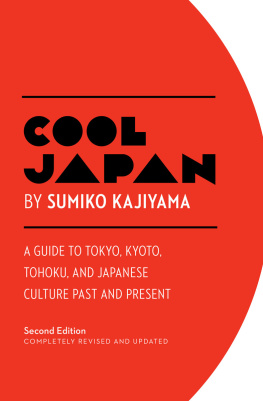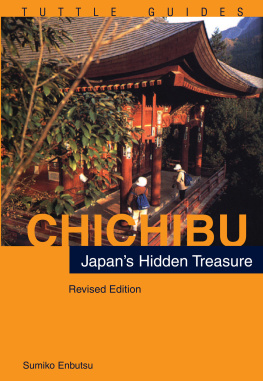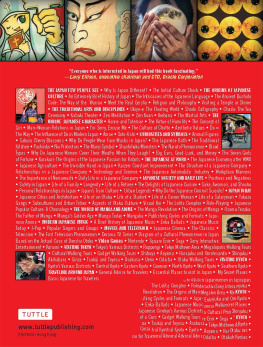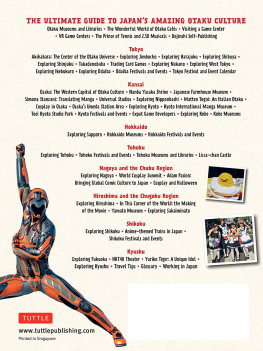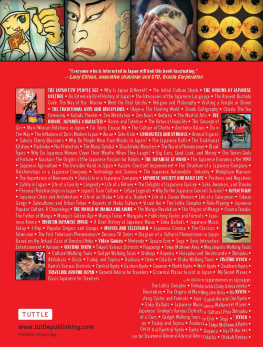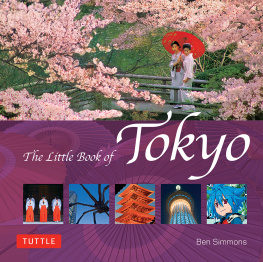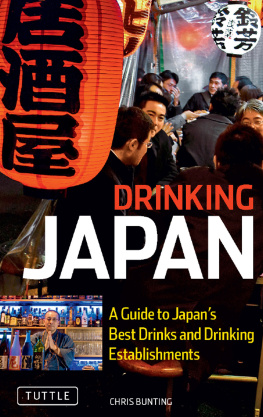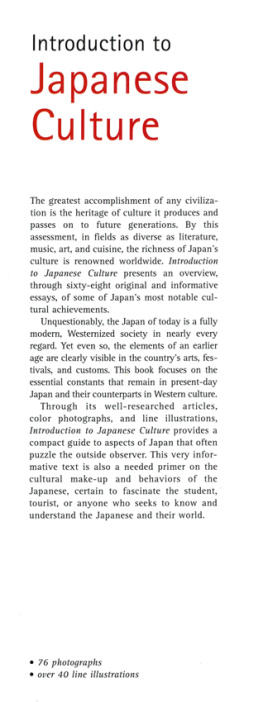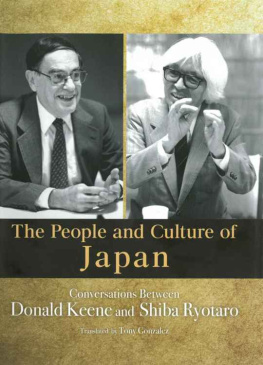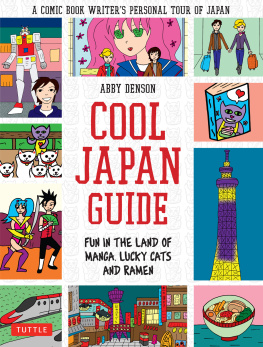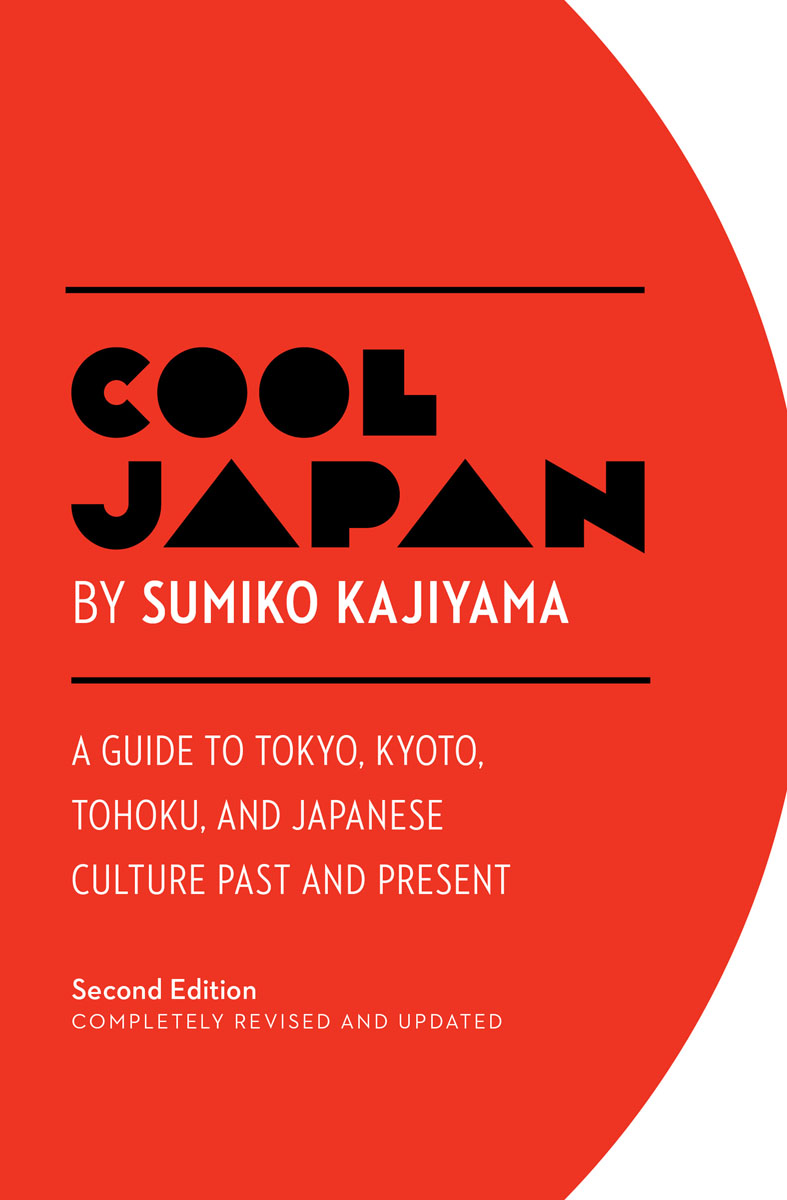
2018 Sumiko Kajiyama
All rights reserved. No part of this publication may be copied or transmitted in any form by any means, electronic, mechanical, recording or otherwise, except brief extracts for the purpose of review, and no part of this publication may be sold or hired without the express permission of the publisher.
Library of Congress Cataloging-in-Publication Data
Names: Kajiyama, Sumiko, 1963- author.
Title: Cool Japan : a guide to Tokyo, Kyoto, Tohoku and Japanese culture past and present / Sumiko Kajiyama.
Description: 2nd edition. | New York : Museyon, 2018. | Series: Cool Japan series ; Book 1
Identifiers: LCCN 2017059883 (print) | LCCN 2017060689 (ebook) | ISBN 9781938450976 | ISBN 9781938450983 | ISBN 9781938450990 | ISBN 9781940842226 (paperback)
Subjects: LCSH: Tokyo (Japan)--Guidebooks. | Kyoto (Japan)--Guidebooks. | Tohoku Region (Japan)--Guidebooks. | Japan--Civilization--21st century. | BISAC: TRAVEL / Asia /Japan. | HISTORY / Asia / Japan.
Classification: LCC DS896.38 (ebook) | LCC DS896.38 .K35 2018 (print) | DDC 952.05--dc23
LC record available at https://lccn.loc.gov/2017059883
Published in the United States by:
Museyon Inc.
1177 Avenue of the Americas, 5th Floor
New York, NY 10036
Museyon is a registered trademark.
Visit us online at www.museyon.com
ISBN 978-1-938450976
ISBN 978-1-938450983
ISBN 978-1-938450990
815110
May they not forget to keep pure the great heritage that puts them ahead of the West: the artistic configuration of life, the simplicity and modesty of personal needs, and the purity and serenity of the Japanese soul.
Albert Einstein, 1922
CONTENTS
All names are shown in the Japanese style: Family name first, given name second

THE HISTORY OF JAPAN (14000 BC - 1931)
JOMON / YAYOI
14,000BC - 300 | Earliest Japanese settlers are hunters, gatherers and fishermen Origins of rice agriculture |
KOFUN
300 592 | Powerful leaders arise and build large tombs (kofun) Around 350: Japan is united by the Yamato court for the first time 538: Introduction of Buddhism from China |
ASUKA
592 710 | 645: The era of the Fujiwara family begins after the Taika Reform |
NARA
710 784 | 710: Nara becomes the first permanent capital 784: The capital is moved to Nagaoka |
HEIAN
794 1185 | 794: The capital is moved to Heian (Kyoto) 1010: Murasaki Shkibu releases The Tale of Genji 1159: Taira clan takes power after the Heiji War 1180 - 85: Minamoto clan puts an end to Taira supremacy in the Genpei War 1187: Minamoto Yoshitsune flees to Hiraizumi for Fujiwara protection |
KAMAKURA
1192 1333 | 1192: Minamoto Yoritomo appointed shogun by the emperor and establishes the Kamakura shogunate 1274, 1281: Mongol invasion attemts are thwarted by stormy weather |
MUROMACHI
1338 1573 | 1338: Ashikaga Takauji establishes the Muromachi shogunate in Kyoto 1467 1477: Onin War destroys Kyoto 1542: Firearms and Christianity are introduced to Japan by the Portuguese 1568: Oda Nobunaga enters Kyoto |
AZUCHI / MOMOYAMA
1573 1603 | 1575: Takeda clan is defeated by Nobunaga at the battle of Nagashino 1582: Nobunaga is killed at Honno-ji and succeeded by Toyotomi Hideyoshi 1590: Japan is reunited by Hideyoshi 1600: Tokugawa Ieyasu wins the Battle of Sekigahara after Hideyoshis death |
EDO
1603 1868 | 1603: Ieyasu is appointed shogun and establishes his shogunate in Edo (Tokyo) 1639: Sakoku (isolation) policy is adopted; Japan closes its doors to the world 1689: Matsuo Basho leaves Edo for his journey to Tohoku 1854: Commodore Perry of United States forces Japan to open ports for trade 1867: Sakamoto Ryoma is murdered at the Omiya inn in Kyoto in 1867 |
MEIJI
1868 1912 | 1868: Emperor Meiji ushers in the Meiji Restoration and moves the capital to Tokyo |
TAISHO / SHOWA
1912 1989 | 1931: Miyazawa Kenji writes a poem, Unbeaten by Rain, in his small journal |

Kyoto and The Three Beloved Heroes

Kyotos Three Heroes: Murasaki Shikibu, Oda Nobunaga, and Sakamoto Ryoma
History and modern culture coexist in Japan.
The old capital city, Kyoto, is a prime example. Emperor Kammu decided to make this city his capital in 794. Even now, you can find remnants of those days when you walk around the city. The citys layout in a grid-like pattern is itself the very image of Heian-kyo (which means tranquility and peace capital), Kyotos old name.
The city has never stopped evolving in its 1,200-year history. Despite construction restrictions on building heights meant to preserve the citys famous vistas, there are modern buildings. Likewise, people walk about the streets dressed in contemporary fashions while sipping on Starbucks lattsjust as you would see in Ginza or Harajuku in Tokyo.

Modern Gion Matsuri celebrations; Gion Matsuri in Rakutyu Rakugai-zu, by Kano Eitoku, 1540-1560s, Uesugi Museum
Kyoto was the national capital for over 1,000 years, from 794 until 1868, and its landmarks have a wide range of historic backgrounds. One of the most popular places to visit in Kyoto, the dazzling Kinkaku-ji (The Golden Pavilion), was built at the end of the 14th century, during the Muromachi period, while the famous geisha district, Gion, was most prosperous in the beginning of the 19th century, the latter part of the Edo period.
People jokingly say that if an elderly Kyoto resident mentions the last war, he or she means the Onin War of the 15th century, not World War II. The center of Kyoto was burned down during the Onin War, while it was left untouched by WWII.

Fall foliage over Kiyomizu-dera with a view of Kyoto City
Because the city was spared during WWII, many of the cultural properties and faces of historic centers were saved and maintained to this day. It may be surprising to some people that a culture built with flammable wood and paper has been kept intact for such a long period of time.
You can find the footsteps of people who lived in a various periods in the past in this not-so-big city. In this way, you can easily travel through time as you travel through Kyoto.
Next page
